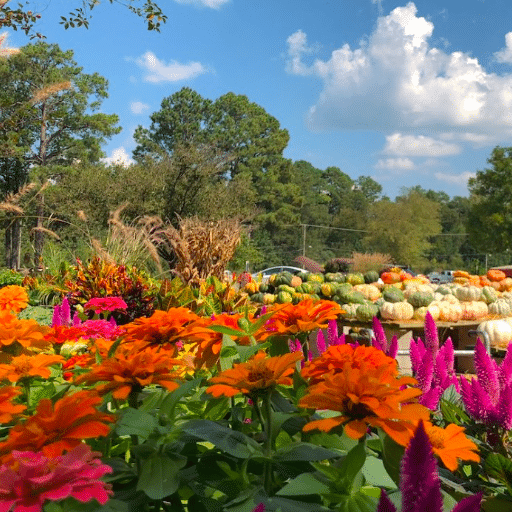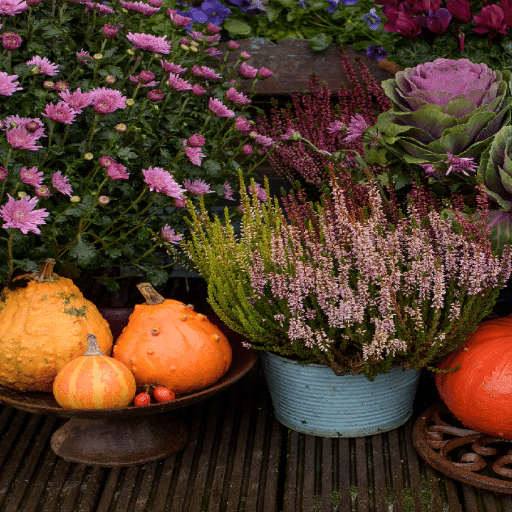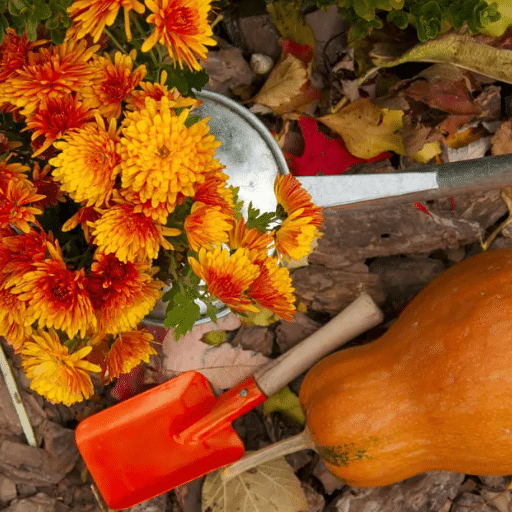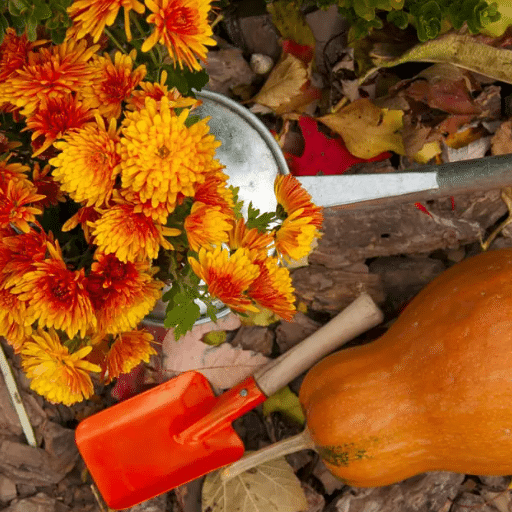Physical Address
304 North Cardinal St.
Dorchester Center, MA 02124
Physical Address
304 North Cardinal St.
Dorchester Center, MA 02124

In preparing a vegetable garden this fall lies the promise of a luscious harvest next spring. Fall gardening is not just about cleaning up—it is your chance to season your soil for the future growth of plants with fewer pests. New or veteran gardeners alike will find real-life applications for sharpening their gardens in the colder months in this guide. From soil to garden tools and fertilizing needs, we will make sure you’re set for all that gives and prepares you for that little extra.

Fall gardening involves the preparation of your garden for the chillier months to ensure that it fully thrives in the future. This involves such steps as clearing the site of the spent plants, applying compost or mulch to enrich the soil, or planting hardy vegetables or cover crops. Pruning of perennials and cleaning of tools are other activities that also contribute to good plant and tool health. These steps increase the fertility of the soil, reduce the population of pests, and provide a good start for a successful growing season in the spring.
With a fall veggie garden, there are so many wonderful things for the gardeners and the environment to enjoy. The growing season is thereby extended, allowing fruits and veggies such as kale, carrots, and spinach to make it through the chillier months. Fall gardening will also create possibilities for soil enrichment via cover crops and compost so that the soil can be used in forthcoming planting seasons. Pest control is just another benefit while keeping diseases at bay by blocking their life cycle. Proper planning and preparation for a fall garden yields not just a huge harvest but a far healthier and productive garden come spring.
Cool-season crops are the ones that prefer the cool temperatures of fall and therefore should be planted during this season. Lettuce, kale, spinach, and arugula are fast-growing vegetables, which can sometimes be picked more than once. Rooting crops like carrots, radishes, and beets also perform well in the fall, as their sweetness is increased by exposure to light frost. Also, there is the choice of brassicas, which include broccoli, cauliflower, and Brussels sprouts-good for the fall garden, very hardy, and able to bear more cold weather. Soil preparation and timely planting will, of course, give good results as to yield and quality of crops grown for the fall season.
Before frost hits your village vegetable garden, cover any plants that can be harmed with blankets, frost cloths, or plastic to keep warmth inside through the night. Apply a thick layer of mulch with which to protect roots from freezing temperatures and extend harvesting time. Another important factor for consideration is when watering; do so in the afternoon before the frost as wet soil retains heat better than dry soil. You should also give thought to protecting small plants and seedlings with cold frames or cloches against frost damage. All these activities would help protect your crops and set them for a good harvest despite the cold.

Clean Up Garden Beds
Pull up the spent plants, weeds, and debris so that pests and diseases cannot overwinter.
Add Compost and Mulch
Add plenty of compost to feed your soil and mulch to regulate temperature and retain moisture.
Plant Fall Crops
Concentrate on planting cool-weather vegetables such as kale, spinach, and garlic for late-season harvesting.
Trim Perennials
Cut back any dead foliage on your perennials so they can grow strongly in the spring.
Have Your Tools Ready for Winter
Clean, sharpen, and store tools, and extend their lifespan.
Plan for Next Season
Think about what worked and start on plans for next spring’s garden to get better results.
Cutting Back Diseased Plants
Generally, a healthy garden must have plants that are checked, pruned, and maintained. Identify the plants that display signs of a disease: colour changes in the leaves, unusual colours of the spots, or limited growth. Then, using sterilized pruning tools, cut off any exposed area going as far as to the healthy tissue to prevent further progression of the disease. The diseased plant material is then bagged and taken away from the garden; do not put this material into a compost heap as the pathogen could survive and cause a re-emergence of the disease later. This process helps in protecting the free plants and allows for stronger and resilient garden ecosystems.
Transplanting perennials means relocating established plants to a new area for good growth or redesigning a garden space. The right time for transplanting should be selected, often early spring or fall, when it is cool and the plants will not get much stress from the procedure. The new planting site should be prepared by loosening the soil and incorporating organic matter, so it drains well and sustains nutrients. Care must be given to digging gently around the plant and lifting the perennial along with the root ball while causing as little damage to the roots as possible. Replanting is done at the same depth as in the former place of growth, watering well, and putting a layer of mulch to retain moisture. After transplanting care, including regular watering and observing the plant for any signs of stress, will ensure the successful establishment of this plant in its new home.
It is the natural way of making good soil for gardening and reducing some waste. Decomposition of organic materials such as fruits and vegetable scraps, lawn clippings, and dry leaves helps to create a rich form of nutrients that assists plants in growth. Start with deciding on a good spot for the compost pile or bin with consideration to adequate aeration and drainage. Layer in alternating fashion a somewhat balanced mix of “greens” that are nitrogen-rich materials, and “browns” which are carbon-rich materials, thereby turning the pile occasionally for faster decomposition. Never throw any meat, dairy, or oily food into the compost since it can attract pests. When the compost has the appearance of a dark crumbly texture with an earthy smell, it is time to be applied back into garden soil to further improve fertility and structure. And thus, you can have a cool hammering place set up for a healthy and happy garden.

While choosing the right bulbs for your garden, keep in mind the three crucial factors:
Climate-Suitable bulbs should be selected because of your local climate. For example, tulips require somewhat cool climates, while daffodils and lilies can accommodate a wider range of conditions.
Blooming Season-Make plans for the continuous displays with the bulbs that bloom in different seasons: spring (crocuses), summer (gladiolus), and fall (autumn crocus).
Sunlight and Soil Requirements-Confirm that the bulbs are suited to your garden’s sunlight and soil conditions. The majority of bulbs prefer well-drained soil with full to partial sunlight.
Taking these things into account will enable you to lay out a colorful and healthy garden suited to your environment and liking.
Consider such varieties as tulips, daffodils, and hyacinths for fall planting-they reward the gardener with beautiful blooms in spring. The bulbs prefer well-drained soils and usually a full to partial sun location. Select good top-grade bulbs that are healthy and firm; do not buy those that are soft or have mold. Plant at the correct depth, which is usually two to-three bulb heights, with enough space for healthy development. Proper choice of the bulbs and the right method of planting will allow for a profuse color show in the spring.
Planting bulbs in your garden will be easier if you follow some simple steps. Select a spot with good drainage for the soil and full to partial sunlight, as most bulbs require these conditions to grow. The soil should be loosened and treated with compost if necessary so that bulbs grow well. Plant bulbs at a depth of two to three times their height; the pointed ends of the bulbs should be facing upward. Provide adequate spacing so that plants will not become overcrowded. Water well after planting and apply a layer of mulch to help retain moisture and keep the soil cool. Following these easy steps will leave you with a gorgeous and lively garden by the springtime.
For storing bulbs for next spring, carefully dig them up after the foliage has died back and turned yellow. Brush off any soil, never wash them, as moisture would be a breeding ground for rotting. Let the bulbs dry for a few days in a shaded, well-ventilated area before putting them into a breathable container, such as a paper bag or mesh sack. Store the bulbs in a cool, dark, and dry place, as much as possible between 50-60°F, away from freezing or excessive heat. Give labels to the bulbs for easy identification and check them at frequent intervals for any signs of mold or decay. Any bulb showing signs of mold or decay should be promptly discarded. This will ensure that your bulbs are healthy and ready to be replanted the following season.

Tree and shrub care entails watering, pruning, and pest and disease monitoring. The deep watering is done once a week, especially during dry spells, so roots grow deeper. Prune dead or damaged branches in the right season to retain shape and allow healthy growth. Mulch around the base to preserve moisture and keep soil temperature stable but allow the mulch to be at a little distance from the trunk to prevent rot. Inspect from time to time for any pest or disease happenings and get down to fixing them as soon as any are found. These humble steps go a long way in keeping your trees and shrubs strong and healthy.
During fall, proper maintenance is crucial to prepare trees and shrubs for the colder months ahead. Raking and removing fallen leaves to discourage fungi and pest buildup is the initial step. Then, apply a layer of organic mulch keeping in mind that it should not be allowed to touch the trunk, as mulch helps keep roots a little insulated and retains moisture during winter. Assess the plants for any dead or diseased branches and prune as necessary to lessen harm through the winter weather. Fallen is also the very good time to fertilize with nutrient supplies needed for root development prior to full dormancy. Lastly, check on pest or disease symptoms and treat accordingly so that your plants will stay healthy, life-giving, and through the season.
To prepare trees and shrubs for the winter, start by applying a thick layer of mulch around the base to keep soil moisture and regulate temperature. However, keep the mulch from touching the trunk to avoid rot. Dead, damaged, or diseased branches should be pruned since they might break under the weight of snow. Fall fertilization helps to supply essential nutrients to roots for their growth before dormancy. Examine plants for pest or disease symptoms and treat if necessary or the problem will compromise their health through the winter.
The common problems during plant care in colder months are pests, diseases, and environmental stress. Regular plant inspection for possible situations of fault is necessary: discolorations may appear, leaves or stems may wilt, or unusual spots may appear on leaves or stems. Treat pests with horticultural oils or insecticidal soaps as required. The diseased portions must be removed, and a fungicide should be applied when required. Environmental stresses such as frost damage or dehydration should be prevented by watering plants well before frost and covering with materials such as burlap for protection. Plants will remain healthy throughout the cold months if treated promptly with vigilance.
The preparation of a garden for the fall planting season involves many important steps that must be taken for success. Start by removing any diseased plants and debris left over from the summer season. This promotes the prevention of diseases and, at the same time, helps good drainage in your soil. You can forage some compost from a compost bin to add to the soil for organic enrichment. After the garden is set, either sow seeds or transplant seedlings of the cool-season crops. Keep on watching the weather getting cooler and be aware of the first frost so as to protect those recently planted vegetables.
Essential tips for planning a successful fall garden include paying attention to the amount of sunlight the location receives and the drainage. If you are planting seeds, keep in mind the best planting window for the seeds in your locale. Gardening books help you understand the concerns of various vegetables-days to maturity and hardiness zone. Remember to plant pollinator-attracting flowers, as they assist in the plants’ well-being.
Hostas are perennials that require specific care in fall. Once it turns cold, any yellowing leaves must be cut off to ensure their healthy growth come Spring. Check that your hostas have well-drained soil and are not waterlogged, as those conditions can induce root rot. Mulching near the base will keep the roots warm during winter. If you’ve had them wild, divide them for healthier plants. Preparing your hostas for dormancy means slowly tapering down on watering as temperatures go down and the ground starts to freeze.
The ideal time to plant fall garden vegetables depends a lot on your local climate and hardiness zone. Generally speaking, from late summer to early fall is when you should sow seeds for cool season crops. Judging by the first frost date in any location, the time to plant can be estimated. Most vegetables, including squash and peas, should be planted at least 6-8 weeks before the expected frost date. A proper planting time ensures a rather bountiful harvest even as the growing season winds down.